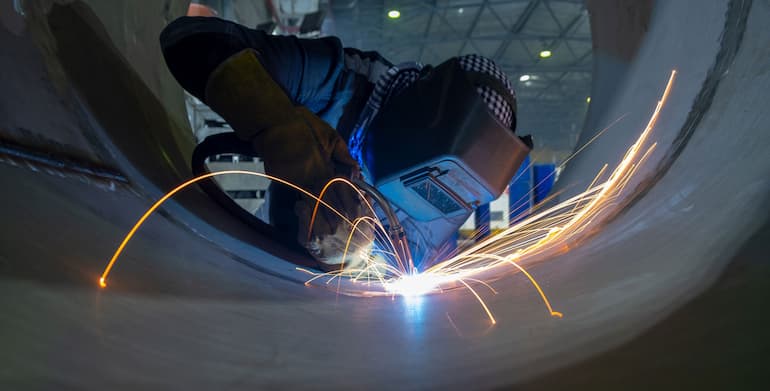The ultimate aim of welding is getting strong, lasting bonds in two pieces of metal that also happen to look good. This is often achieved with filler material in the form of a welding rod or wire. Different types are found in different welding processes, so choosing the right rod or wire is important for the quality of the weld in addition to how much work is needed to get a clean, flush finish when removing spatter with an appropriate sanding disc and grinder combo. The hundreds of available options may make purchasing harder, but this short guide should narrow things down and get you the results you’d expect.
What are Welding Rods?

Rods, electrodes and wires are the pieces of metal inserted into welding guns and help create the electric arc and weld pool that fuses the two metal pieces. This is found in stick and MIG welding, where rods and wires form part of the weld pool, and in TIG welding where the rods create the higher temperatures needed while shielding the base metals from outside contaminants. In this sense, there are two types of welding rods Australia welding stores sell – consumable and non-consumable.
Basics of Consumable Rods and Wire
Consumable welding electrodes are the most common type. As mentioned, rods are necessary for stronger bonds between the base metals. They take different forms in the different welding processes, with longer rods seen in arc welding and wire fed through the welder and gun in MIG welding. Depending on the metals and the required protection, consumable rods can also be bare or coated. The first are used when fusing pieces of wrought iron or manganese steel, whereas flux-coated rods shield the metals from oxidisation and contaminants which negatively affect the heat achieved in the electrical arc and weld strength. The coating can additionally be layered and in different thicknesses, with lighter coated rods more in line with maintaining a stable arc, and medium and heavy flux coatings (either with a cellulose or mineral layer) used in heavy-duty applications when fusing thicker pieces of metals, such as in large construction projects.
TIG and Non-consumable Rods

TIG welding is used where there’s a need for precise and exceptionally strong welds. Here rods don’t form part of the weld, so are classified as non-consumable. Instead, they have a higher melting point and help stabilise the arc and reduce the effects of contaminants. There are two main types. Tungsten rods are more common, coming as either pure tungsten or with oxides of trace metals (thorium, cerium, lanthanum and zirconium) and are dependent on the current requirements and polarity in the welding machine. To make buying easier, each type has colour-coded tips.
Carbon electrodes, consisting mostly of graphite, are usually seen in cutting processes or repair work, with their ability to get high temperatures in the arc.
Simplifying Purchases – Why Electrode Classification Matters
The wide range of metals on one hand, and the different rods on the other, makes mixing and matching guesswork without a proper chart that classifies rod types and their uses. Classification charts consist of numbers and letters. They inform welders whether rods are flux-coated or not, the type of coating used, whether rods can be used in a vertical or horizontal position (or both), and if welding machines need to provide arcs in AC or DC straight or reverse polarity. Additional information includes how deep the rods penetrate the weld, as well as the tensile strength they achieve.
As an illustration, E6010 rods indicate they are meant for arc welding (‘E’), have 60000 pounds of tensile strength (the first two digits), can be used in all positions (the third digit), and with reverse polarity DC from the machine (the fourth digit). This also happens to be one of the most common mild steel rod types, used in applications as diverse as construction, general metal fabrication and pipe welding in both overhead and flat positions, although only with a direct current.
Considerations When Buying Electrodes
With charts, you get the basic data needed when buying welding rods in Australia. A few other factors mean you’ll have the strongest welds in any project you undertake. Consider the properties of base metals that need to be fused, with rods matching the metal type, and achieving the desired weld strength. Also consider the condition of the workpiece, as rust and dirt will affect results. Carbon content is another thing to take into account, as it will impact the heat in the arc as well as the ease and speed with which the metals are fused. Before welding, check for magnetism and where the metal is ferrous (iron, carbon or alloy steel) or non-ferrous, and these have different melting points and need machines tailored to reach those temperatures. In this respect, also consider if the rods need a specific polarity and if the machine is up to the task.
With this info ready, you’ll be getting the right electrodes and welding wire to match the composition of the base metals for stronger and longer-lasting welds that also need no or minimal cleanup for a neat look.

